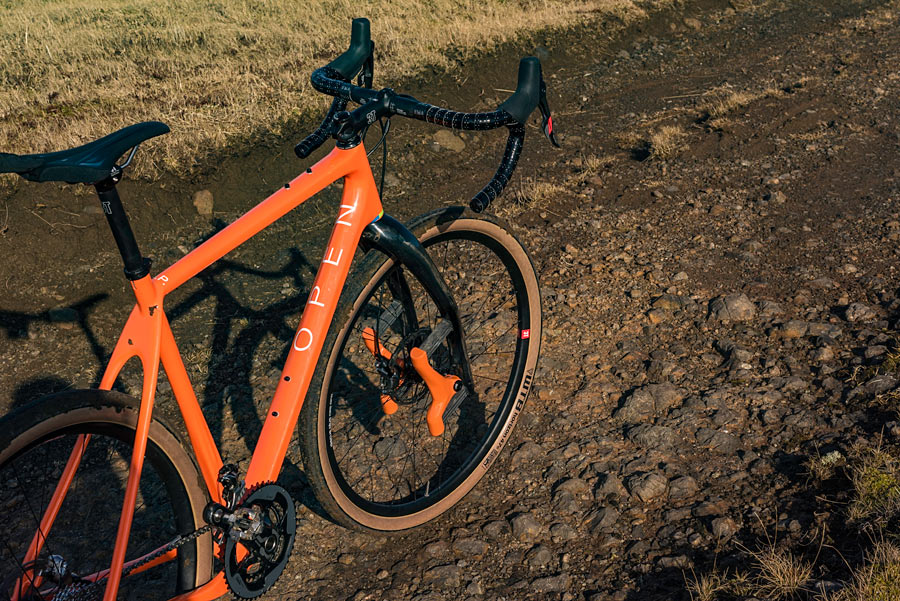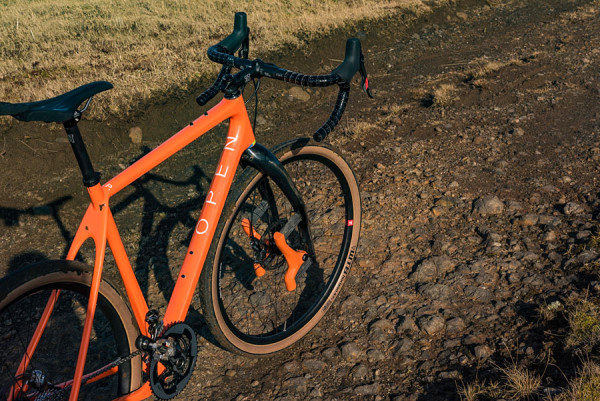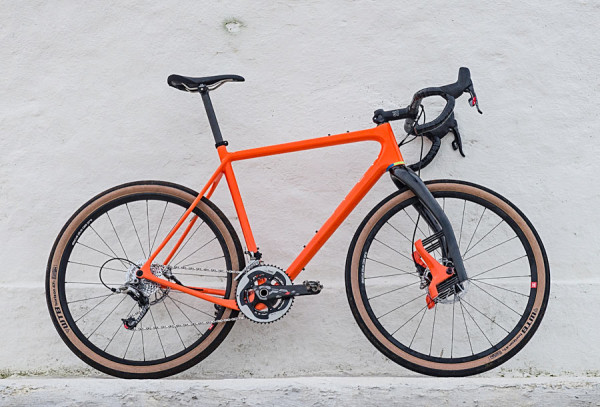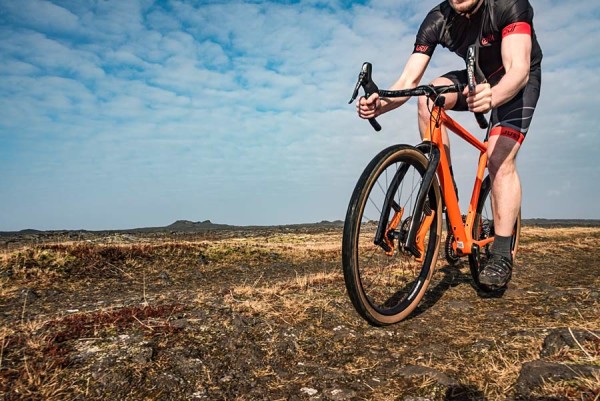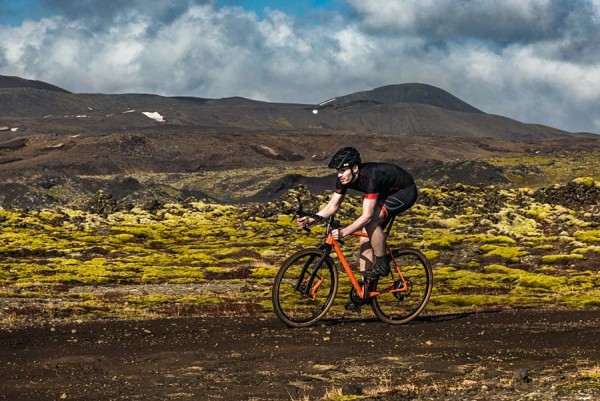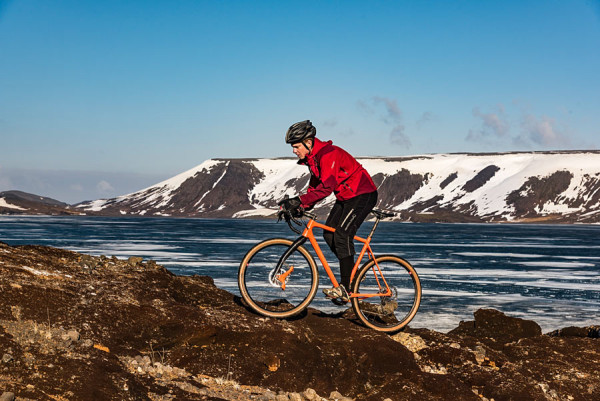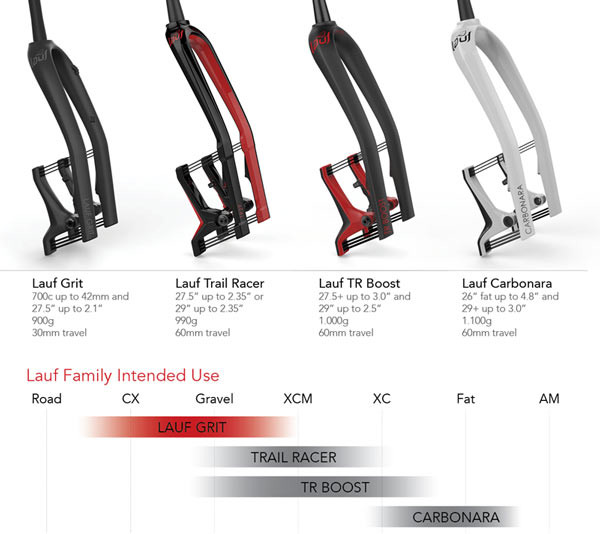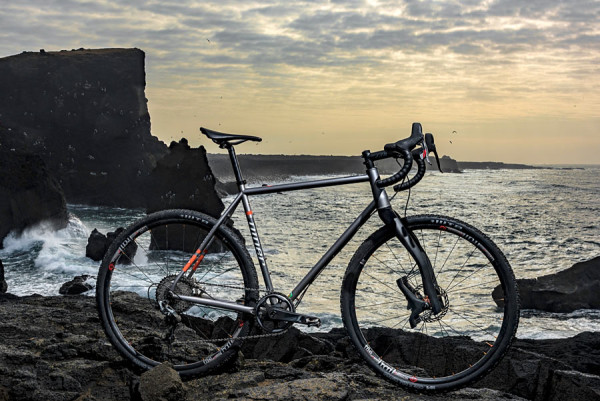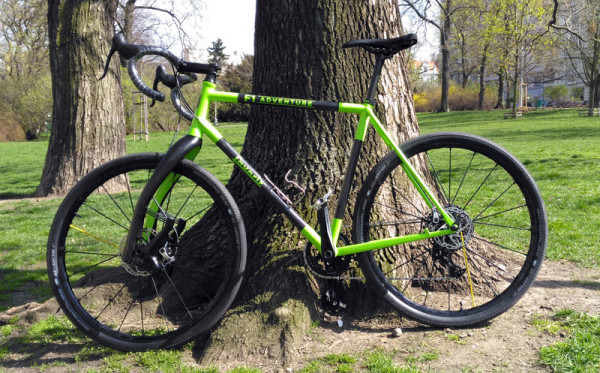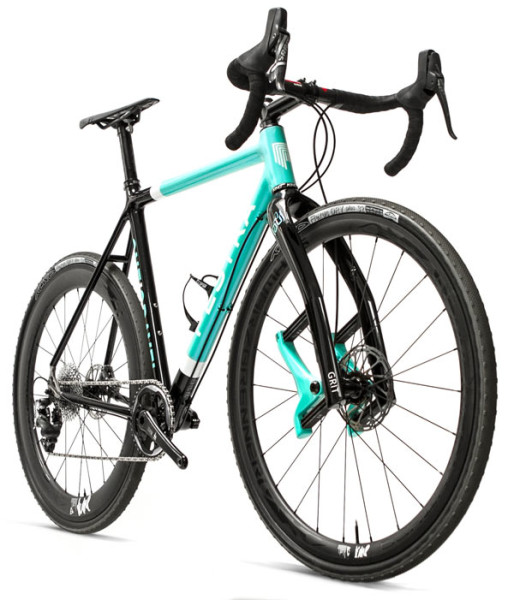Taking their short travel carbon leaf spring suspension fork design to a wild new frontier, the Lauf Grit gravel road bike fork gives your drop bar bike a new, adventurous life.
The Grit uses the same overall design as their Trail Racer XC fork, but it cuts the travel in half, offering just 30mm of suspension. It still uses their virtually unbreakable carbon composite leaf springs, but in a different tune. The idea is to take the edge off those pot holes, washboards and rocks while keeping your bike fast and light. Judging by the photos here, Lauf’s volcanic Icelandic terrain provided the perfect inspiration and proving grounds.
The Grit has an effective axle-to-crown of 409mm, which is calculated with 6mm of sag accounted for. While that number is a bit taller than the stock 395mm to 405mm A-to-C measurement of the bikes it’s meant to go on, that was intentional. First, it had to clear some fat tires, up to 700×42 or 27.5×2.1, when fully compressed. Second, it’s designed to turn your ‘cross racer into an all-day (or multi-day) adventure bike, for which a slightly longer wheelbase, more relaxed head angle and taller front end makes sense.
We spoke to Lauf about this in detail over the past few weeks, and here’s their (slightly paraphrased) commentary on it:
To summarize how our design works out for the ‘standard’ 395mm CX bike, the effect of Grit on the geo would be:
- Standard fork geo: A2C 395 – HA 71.0° – Rake 45
- Grit resulting geo: A2C 409 – HA 70.34° – Rake 47
So as you can see, the HA change is less than you usually see between different sizes of the same frame from the same manufacturer, where the norm is a HA range of a full 1° between sizes. We increased the rake from the ‘standard’ 45mm to 47mm to maintain similar trail (only +3mm) without lengthening the wheelbase too much. If we had gone for a maintained trail (by pushing Rake up to ~50mm) we would have gotten a pretty long wheelbase at the same time, while we wanted to stay closer to the original geo of the donor bike in general, not just Trail wise. But these are just details that can probably be compensated for with your fine-tuning of the setup of the bike (read: stem length, saddle position, etc.).
We’ve tested with excellent results on the Niner RLT9 Steel, Trek Boone and Norco Threshold.
Here are the official specs:
- Travel: 30mm
- Weight: 900g with 210mm steerer and including axle
- Axle to Crown: 409mm* (with 6mm of sag)
- Rake: 47mm*
- Axle: 12x100mm or 15x100mm
- Brakes: Flatmount for min.160mm discs
- Steerer: Tapered 1 1/8” – 1 1/4 “ (adapter for 1.5” included, adapter for 1 3/8” available)
- Tires: Up to 700x42c / 27.5×2.1
- Rider weight limit: 110kg/242lbs
*For maintained steering characteristics from a 45/395mm rake/A2C rigid fork
The Grit has been in development and testing for about a year, with folks from Niner, Salsa, Ridley, Open, Haro, Framed, Marin, Lamere and Engineered bicycle brands all praising it. No word on whether you’ll see OEM spec from those brands yet, but we wouldn’t be surprised if it was at least an upgrade option on some.
Here’s how it fits into their lineup. The weight savings comes mostly from the shorter overall stature and 20% shorter spring leafs. Other differences, as explained by Benekikt Skúlason, Lauf’s CEO and founder:
“The key difference is obviously the shorter Axle to Crown (in part facilitated by our thinner-than-ever-before crown design, compared to our previous forks) and the shorter travel. Making our technology fit into the geometry and riding style of Gravel/CX. Then there are details such as flat-mount brake mounts and 160mm disc compatibility (compared to 180mm for the TR). This fork is also designed using what we’ve learned from the TR29 and the TR Boost, in a nutshell, it uses the deeper fork leg design from the TR Boost to get better front/back stiffness and it has the improved cable routing of the TR Boost as well.
Aside from these technical differences/improvements from the original TR, the key is how perfectly our technology fits into this segment. For XC, the TR forks offer very clear pros but some riders definitely want more travel and rebound damping in that segment. In XC we are the in-between solution. Between rigids and full-on suspension forks.
For Gravel/CX however, for the short travel required/desired, the technical pros (responsiveness, lightweight, maintenance-free, energy efficiency) shine brighter than ever, and the cons are eliminated (no damping, meaning that long travel suspension does not work with our technology does not matter at all here). We simply can’t see how a traditional suspension fork can match the performance of the Grit.”
The Grit is aimed at the fast riding crowd rather than the bikepacking/touring cyclist. There are no rack or fender mounts, and here’s why:
“That’s a slightly different market,” says Skúlason. “Those who prefer their gravel bikes to be fast and light (and clean looking) would see it as a turn-off. It’s always going to be quite significant added weight, and it simply doesn’t appeal to those who like things fast and light. Maybe we’ll do something like that in the future though, as we believe it makes perfect sense.”
But, it will work with the D.Fender. Here’s how it looks on a couple other bikes:
The fork will be available starting in August and retail for $790. The official launch is at Sea Otter Classic, and we’ve just received our own pre-production Grit for testing. Stay tuned for first impressions…and check out our Lauf HQ tour to see early prototypes and testing of their forks.
